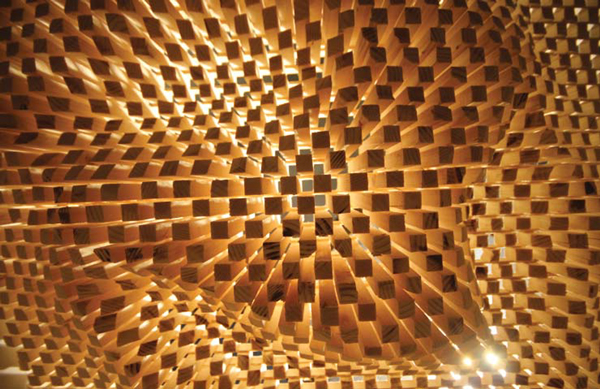Synergy of music and stereoscopic images and sequences.Oct. 6 @ Gløshaugen
The Light & Colour Group @ NTNU – Daylight Lab and Room Lab.
The Light & Colour Group at NTNU is established at the Department of Architectural Design, Form and Colour Studies. It consists of architects, interior architects, physicists and artists. This diverse group of professionals contributes to a working atmosphere where research has crucial multidisciplinary input. The Light & Colour group has developed contacts with a number of academic institutions and companies in and outside Norway, which gives the advantage of a broad interdisciplinary scientific network as well as a close connection to architectural practice.
The research conducted within the group involves daylight, artificial light, colour, physics of light and colour, visual perception, and related fine art. Most of the research addresses questions with a direct application to architecture, but there is also research with more basic approach.
In order to conduct rigorous scientific research, the group has developed two high quality laboratories: “Daylight lab” and “Roomlab”. Both are important assets and internationally rather unique, as there exist only very few well equipped lighting laboratories around the world. The group members are involved in education on all levels in courses arranged for students of architecture, for other students at NTNU and for different groups of practitioners. In these courses the two laboratories are frequently used.
The Light & Colour Group invites you to visit the laboratories during the Meta.Morf biennale, showing research projects and examples of student works.
DAYLIGHT LAB: light and colour in architecture
The sun, with its exceptionally high brightness and wandering across the sky, is a phenomenon well known to us all. Sunlight is a strong architectural element affecting the architectural quality. In order to study the access of sunlight in architecture, both at the sites and in interiors, a simulator of the sun, Artificial Sun, has been developed.
The Artificial Sky, on the other hand, is a simulator of heavily overcast sky, i.e. without sun. It is actively used for various research and educational purposes, e.g. for measurements of daylight factor and luminances in scale models. Examples of other projects are systematized observations of colour in different lighting situations, and observations of colour shifts when daylight is filtered through transparent or translucent materials.
ROOM LAB: interaction of light, colour and space + 3D projection
The Roomlab is used for full scale modeling to study the interaction of light and colour in architectural space. An example of work by students will be exhibited.
A new feature in Roomlab is a silver screen for projection of 3D images. The silver screen inaugurated by Claudia Moscosos in her PhD research project, researching the usability of virtual environments (VE) as a research tool to investigate the interaction of daylight and colour on the perceived quality of architectural rooms.
Krzysztof Orleanski at Department of Electronics and Telecommunications was involved in the process of installing the silver screen. Orleanski will show his latest project, a performance with the working title “Synergy of music and stereoscopic images and sequences – Polish and Norwegian Music Landscape in 3D”.
Barbara Matusiak, Alex Booker, Arne Valberg, Claudia Moscoso, Veronika Zaikina and Kine Angelo.
Department of Architectural Design, Form and Colour Studies.
Faculty of Architecture and Fine Art.
Norwegian University of Science and Technology (NTNU).




 English
English